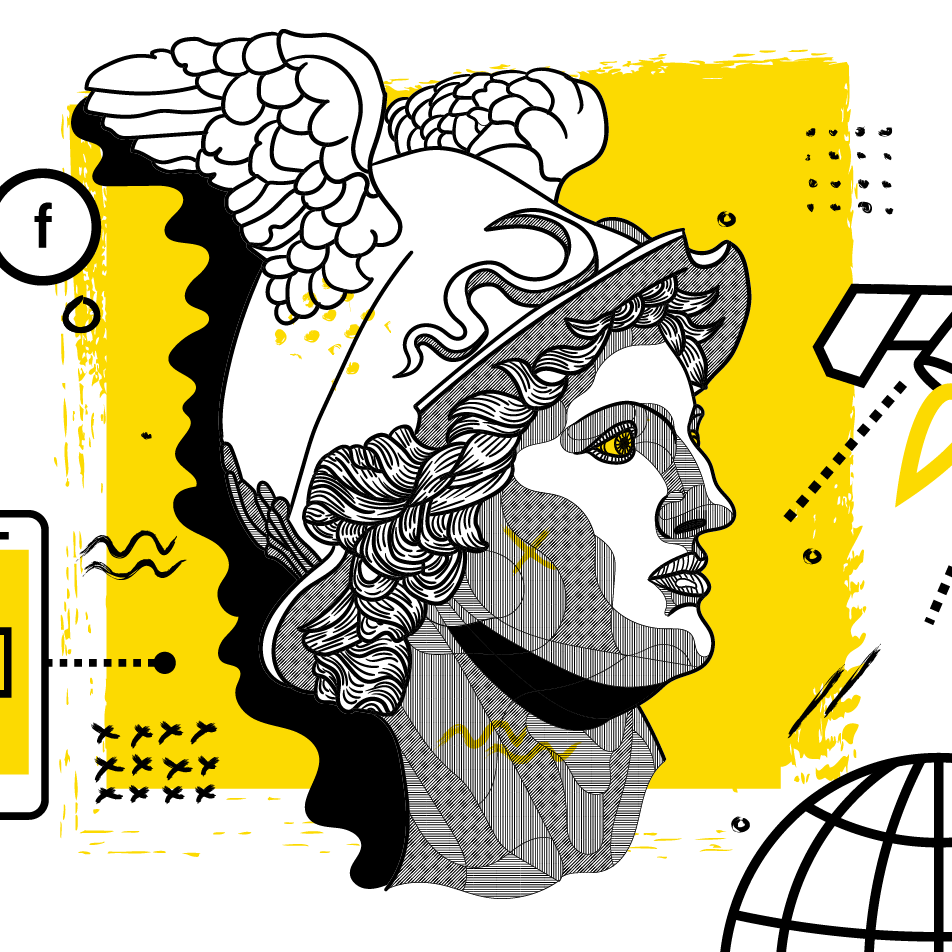We grow by sharing our experience, knowledge and expertise/

The Crystal Ball Time of the Year; Upcoming Trends in Digital Marketing for 2019
It’s been a full year of developing trends in digital marketing—some are emerging and others are maturing. Let’s take a look at some of the most important to watch in 2019.
Personalization and Serving the Segment of One
We have certainly been talking a lot about personalization and the ideal Segment of One in our presentations the past year, where 1-to-1 communication is taking over from the notion of segmented or even micro-segmented audiences. The ultimate stage of personalization is one facilitated through data, advanced analytics and digital technologies. It involves collecting a customer base with sophisticated criteria, where tech and algorithms help brands deliver personalized communication at scale and in real-time. The most referenced example of this is Donald Trump’s election campaign where 5.9 million versions of ads were served to capture the needs, beliefs and preferences of the voters.
And it’s not only about ads. We are talking about personalized communication across the board; personalized content, products, emails, and more. In fact, 96% of marketers believe that personalization advances customer relationships.
We will see this trend continue as more and more organizations are looking into digital transformation initiatives where data collection, data enrichment and UX (user experience) are key concepts.
Programmatic Advertising
One of the most misused and controversial trends has been Programmatic Advertising. eMarketer foresees an increase of the current 80% share of programmatic in digital display ad spending in the US.
We explained what programmatic is last month in our insights article. Simply put, Programmatic Advertising is an automated process of buying, selling and optimizing ad placements on digital media which is facilitated by computing power, humongous data and machine learning algorithms (AI). The process focuses on presenting the appropriate message to the appropriate person at the appropriate time in order to maximize your marketing KPI. It does so by analyzing human behavior though the data it collects.
Not every new thing in town is as fantastic as it sounds. Programmatic is facing accusations of misuse which has led to transparency issues and brand safety considerations. A new release of the prominent protocol that facilitates the real-time bidding (RTB), where most programmatic spend is made, promises to address these issues.
We don’t see this trend reversing any time soon. In fact, we see that Programmatic will be established as the dominant means of digital display buying and that ongoing improvements in technology and industry standards will help it evolve and mature.
Artificial Intelligence
Most people in marketing used to hear artificial intelligence (AI) and think of E.T., Spock and Darth Vader. But, a buzzword of our times, AI is massively changing our lives every single day.
On a simple level, artificial intelligence (AI) is a group of computers that can provide results extremely fast. To do so, they need to be fed data and an initial way of thinking and scope. A familiar example might be Facebook’s lookalike audiences, where effectively AI is used to find prospects who resemble your existing customers based on behavioral and other type of data gathered and analyzed.
The applications of AI vary across industries and purpose. In the marketing context, AI is being used to facilitate some of the trends discussed in this article and more such as to:
- Recognize new customer segments
- Facilitate the segment of one
- Generate customer personalization at scale
- Build and nurture customer relationships using conversational AI and chatbots
- Automate marketing
AI is here to stay and will transform our marketing capabilities in so many ways. As Brian Solis puts it "Even in its earliest iteration, AI helped companies better understand how to be human. The irony is that it took this very advanced technology to make them think differently about how they should communicate with their customers.”
Conversational Apps - Chatbots
Closely connected to the AI trend, Chatbots are a “thing” these days. Evidently the voice search competition among the tech giants [Apple – Siri, Google – Voice , Amazon – Alexa, Microsoft – Cortana] has given a great boost to the evolution of the Chatbot in Conversational apps.
Chatbot software using AI can simulate a conversation (or a chat) with a user in natural language through messaging applications, websites, mobile apps or through the telephone. It is the evolution of a Q&A system which builds on Natural Language Processing (NLP).
In a marketing context, these applications address issues such as:
- unification of the customer experience across digital assets
- personalization of information, service and sales
- optimization of the sales funnel (e.g. lead conversions or ecommerce sales)
We all know how hectic it has become to manage all the digital touchpoints of the brand. If you add support and sales to the equation then…..you get the idea. Conversational AI promises to solve all of these and benefit a brand by:
- Providing control over the customer-brand conversation
- Unifying the customer experience on the digital assets
- Making it personal in a good way
- Taking the sales funnel process to an individual level at scale
- Making it easier to recruit and maintain than an army of people
We believe in this trend. We are watching companies adopt it fast for all the benefits it brings to the table. It’s not plug and play though. It needs commitment and a particular mindset to pay off.
Blockchain
We left blockchain last as it is the newest of trends to be taken on in marketing and it is not evidently clear how it will impact our marketing ecosystem. There are all sorts of scenarios which are yet to be seen.
Blockchain uses a distributed ledger or a decentralized database to store data instead of storing data in traditional databases. This distributed software network operates both as a digital ledger and a mechanism enabling the secure transfer of assets without an intermediary. This may not mean much to most people. Don Tapscott co-founder of the Blockchain Research Institute explains it very well here.
As a result, this shifts data control over to consumers, while giving organizations new ways to use that data. The fact that it is distributed naturally, eliminating a central authority’s approval for a transaction to occur, provides blockchain high levels of trust and transparency.
In a digital marketing context, blockchain directly addresses fundamental issues of data control and transparency while at the same time threatens to remove the media middlemen. It aspires to make digital advertising a less ambiguous place by improving the delivery and reporting of performance and by making publishers more accountable.
We think that is something to keep an eye on in the year to come as the expected changes could be dramatic—positively or otherwise—depending on which side of the road you are standing.




